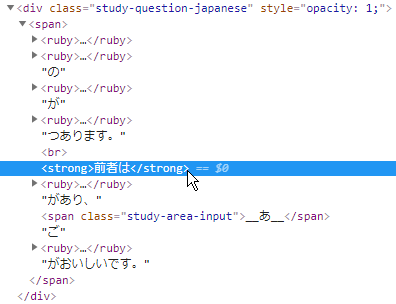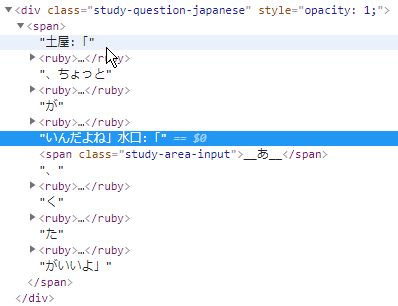Can you really consider 思い出す a usage of the ~だす grammar point?
面白いことを今思い出した。
Also, the も is missing from the furigana on 思.

Can you really consider 思い出す a usage of the ~だす grammar point?
面白いことを今思い出した。
Also, the も is missing from the furigana on 思.
I was thinking the same when I got that sentence since I knew the translation of 思い出す as “to remember” and not “suddenly begin to think”. But then I realized that the origin of the common translation “to remember” has its roots in the だす grammar, which helped me to understand this grammar point better. So I think it was a good decision to use 思い出す cause it shows origin of this word using the だす grammar.
A similar case was the がる grammar “to feel/to act as if” which I found quite difficult at first. But when I saw the usage in 怖い -> 怖がる (scary -> be/feel scared) this helped me understand the grammar much better. Even though 怖がる is a normal godan verb it shows it’s origin by using the がる grammar. I think it’s good that bunpro uses examples like this.
Grammar point: 506
Example sentence 3658 uses half-width question marks while example sentence 3659 uses full-width question marks.
Grammar point: 177
Example sentence 555 has a question mark and a period.

Grammar point: 468
The respective study question of example sentence 3545 is lacking the ruby for furigana

Again, thank you very much!
I have fixed the “liked” ones. I will inform the programming team about the furigana problem 
Grammar point: 431
Example sentence 2135 does not start with a name, while the study question does
Study question:
Example sentence:
Also, the name and 水口 are missing the ruby tag for furigana

And note that in the middle of the sentence the name is replaced with “・” in the example sentence.
Judging from how the other example sentences look I suspect it’s the same with their study questions.
Grammar point: 502
Inconsistent use of space after colon.
Last example sentence (3648) has a space after the first colon, the rest don’t.
Also, I realise now that in the last report the name lacks the blue highlight.
Fixed! Thank you!
Could you tell us what device and browser you were using that caused that? We were unable to produce it on any of the main browsers.
@LucasDesu Those screenshots are from the Android app, correct? We are currently having the app reworked and will have a much improved version available to you shortly with a full app sometime in the near future. Sorry for the less than stellar current iteration.
@seanblue Should be fixed now!
The review count and the ghost are dropping one line when the correct answer counter reaches 10+
Suggestion: show the bunpro logo left to the SRS when it is a normal review. Show only the ghost left to the SRS when it is a ghost review. That way you don’t need additional space for the ghost and users can distinguish easily which SRS is used (showing the bunpro streak logo for ghost reviews might be a bit confusing since they are using different SRS)
Thank you for reminding me! That should be fixed now. We will give some thought to the hanko/ghost switch for ghost reviews.
Ah, yes, sorry.
OS: Windows 10 Education v1803 build 17134.165
Browser: Google Chrome 67.0.3396.99 (64-bit)
Location: Reviewing → Example sentences
edit: Does not occur on the grammar point’s page
Grammar point: 21
Study question for example sentence 75 lacks the period at the end


Grammar point: 243
Example sentence: 748
Study question has です at end of first sentence, example sentence doesn’t. Not sure if this is intentional.
Grammar point: 432
Example sentence: 2137
Study question has a period at the end, none of the grammar point’s example sentences do.
Update:
Sorry, this is not something you need to worry about, it only happens after an alert. I put alerts in my scripts to detect when there is a discrepancy between the study question and the respective example sentence, and that seems to be what triggers this.
Grammar point: 243
Example sentence: 748Grammar point: 21
Grammar point: 432
Example sentence: 2137
All fixed, thank you again!